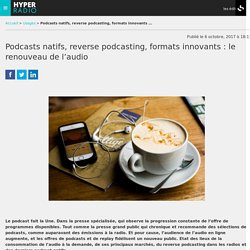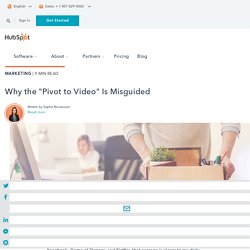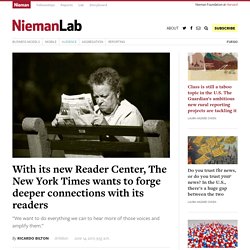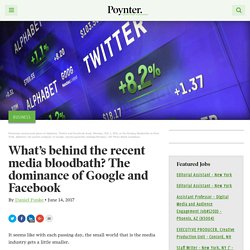Pause numérique 4
> Ingridks
Comment France Inter innove en pleine crise - Podcast A Parte - Ginkio. Le confinement, une belle occasion pour changer son rapport à l'information ? - Les médias le monde et moi. Bientôt une vingtaine de jours que nous sommes assignés à résidence, confinés, enfermés et obligés de suivre à distance l’avancée mondiale d’une maladie qui nous prend au dépourvu en remettant en cause la course folle de nos sociétés.

Comme le dit si bien Bruno Latour, il ne faut pas gâcher cette crise. Et si la seule guerre à mener consiste sans doute à nous faire violence contre nous-mêmes, il est temps de prendre de l’avance sur la suite en modifiant notre façon de voir le monde, notre façon de le comprendre et de l’appréhender, en interrogeant donc, en premier lieu, notre façon de nous informer.
Seconde édition du #Live #BienSinformer L’excellente Revue des médias, réalisée par l’INA, revient justement cette semaine sur la manière dont le confinement modifie notre rapport à l’information. Vous êtes une centaine (nous ne pouvions faire plus pour cette première édition) à l’avoir suivi, et malgré les bugs de cette première improvisée, vos retours ont été fort enthousiastes !
FAKEOFF. Welcome to the Post-Text Future. Your phone buzzes. A message, an Instagram post, a tweet — some bit of digital effluvia has come in, and it’s right there, promising a brief but necessary hit of connection. All you have to do is look. But, just as an experiment, how long can you resist looking? A minute? Two? Your phone buzzes.
A newspaper in Japan is using AI to summarize news stories to get them out quicker.
Comment une industrie a raté le virage des données et du numérique.
Last updated on January 24, 2018 Mai 1995 fut riche en évènements.

Jacques Chirac a été élu président le 7 du mois, Mark Zuckerberg a fêté son 11e anniversaire le 14 et Libération a ouvert son site internet le 26.1 La plupart des grands noms de la presse quotidienne l’ont rejoint sur le web dans les mois qui suivirent, suivis quelques années plus tard par les radios et les télévisions. 1995, c’est trois ans avant la création de Google, six ans avant Wikipedia, dix ans avant YouTube et Facebook, sans parler d’Instagram ou de Snapchat. Vingt ans plus tard ces médias, arrivés si tôt en ligne, sont devenus les prestataires de ces géants du web,2 quand les milliardaires des nouvelles technologies ne les ont pas tout simplement racheté à la manière de Niel (Le Monde) ou Bezos (Washington Post).
Social Media et Marketing Digital : Tendances 2018, l'avis des experts. Le Quatre Heures, Fakir, Explicite... Quels médias alternatifs ?
Newsonomics: The New York Times’ Mark Thompson on regulating Facebook, global ambition, and when to stop the presses (forever)
Five years is a long time, especially in the media business.

It was five years ago this week that Mark Thompson took on the top job at The New York Times Company.
Google à la conquête des villes, par Evgeny Morozov (Les blogs du Diplo, 3 novembre 2017)
Podcasts natifs, reverse podcasting, formats innovants : le renouveau de l'audio. Le podcast fait la Une.

Scénario catastrophe pour les médias d’informations : la faute à leurs dirigeants. Why the "Pivot to Video" Is Misguided. When I read that the average American spends five-and-a-half hours per day watching video content, I scoffed -- because between video explainers on Facebook, Game of Thrones, and Netflix, that average is closer to my daily minimum time spent watching videos.

After all, 2017 is “the year of video” -- so why shouldn’t people consume more videos, and why shouldn’t creators make more? As it turns out, there is such a thing as too much video -- and it happens when publishers “pivot to video.” No, not that kind of pivot. I'm talking about the "pivot to video.
"
If I Ran a Newspaper…. – Whither news? – Medium. So how does this mythical, remade newspaper — or magazine or broadcast station — make money?

The relationship strategy provides a number of opportunities across multiple revenue streams and efficiencies. Start with advertising. At the most basic level, if you are making products and services that are more useful, engaging, relevant, and valuable to people, then you will get greater loyalty, engagement, and usage, and even under the old, CPM-based advertising business, you will have more ad inventory. More important, knowing about people’s interests and needs — at an individual level — will enable you to sell higher-value and highly targeted advertising.
Who Said What tool brings artificial intelligence to fact-checking audio and video. Credit: Image from Pixabay.com Who Said What, a tool that will use artificial intelligence to identify quotes in audio and video segments in an effort to help journalists and fact-checkers verify information, received a $50,000 grant from the Knight Foundation in June.

Who Said What will be built to enable users to search either private collections or publicly available audio and video segments, in collaboration with the Internet Archive.
The Times of London finds commenters are most valuable visitors. Mutations du journalisme à l’ère du numérique : un état des travaux. Ahmad A.

N., 2010, « Is Twitter a Useful Tool for Journalists ? », Journal of Media Practice, 11(2), p. 145-155.
With its new Reader Center, The New York Times wants to forge deeper connections with its readers. When it comes to hearing from readers, The New York Times wants to go a lot further than just letting people chime in at the bottom of some articles.

Last week, the newspaper announced The New York Times Reader Center, a new initiative focused on finding new ways to connect with Times readers and deepening the connections it already has. The team, whose “exact size is still taking shape,” according to a Times spokesperson, will be staffed by a handful of journalists who will work with various Times departments — including interactive news, social, and even marketing and branding — on various reader-centered projects. “Our agenda is not for our little team to make a splash.
What’s behind the recent media bloodbath? The dominance of Google and Facebook – Poynter. It seems like with each passing day, the small world that is the media industry gets a little smaller.

On Tuesday, Time, Inc. announced it would be laying off or buying out 300 people as part of a plan to re-engineer its cost structure and become more efficient, according to a memo sent to employees by CEO Rich Battista. Then, HuffPost laid off 39 people Wednesday as part of broader cuts made during parent company Verizon's acquisition of Yahoo.
The Washington Post to start experimenting with audio articles using Amazon Polly. By WashPostPR By WashPostPR June 9 The Washington Post today announced it has started experimenting with audio articles using Amazon Polly, a service that converts article text into lifelike speech. For the next month, mobile users will be able to listen to an audio version of four articles daily across business, lifestyle, technology and entertainment news categories. “This is a new technology that can give users more choice and better accessibility to our content, so we wanted to create an experiment to dive deeper into the user experience,” said Joseph Price, product manager at The Post. “After a month, we’ll take what we’ve learned about how users engage with this feature to develop our first iteration of a product with Amazon Polly.”
Audio articles in the pilot can be found here on mobile devices and will include a “Listen to this article” button on the article page.
Le lecteur de la presse veut participer à ses contenus. Dans le cadre de #DemainLaPresse, la campagne d’envergure de promotion de la presse menée par l’ACPM en mars dernier, une étude de perception en ligne a été proposée aux lecteurs, afin de cerner leurs attentes, leurs visions et la façon dont ils envisagent les marques presse de demain.
(Bonne) surprise, plus de 50 000 personnes ont répondu présents pour cette grande enquête quali qui comprenait une trentaine de questions, nous a indiqué Stéphane Bodier, vice-président de l’ACPM. Rassurante, l’étude pointe tout de même que 77% des sondés ont lu la presse le jour où ils ont été interrogés alors que 89% réclameraient la presse si elle n’existait pas. S’ils sont 68% à se montrer favorables à ce que la lecture de la presse quotidienne soit obligatoire jusqu’à la fin du lycée, Stéphane Bodier relève que les lecteurs ont la volonté de « participer ». L’étude montre également la distance que les personnes interrogées mettent encore entre presse et publicité.
Les GAFAM contre l'Internet : « Leur objectif, c'est d'absorber le marché »
Danielle Attias. Mixed reality, computer vision, and brain–machine interfaces: Here’s the future The New York Times’ reborn R&D lab sees.
When it comes to emerging technologies, there’s a lot to keep newsrooms busy. Virtual reality has promise, and so do chatbots. Ditto, too, for connected cars and connected homes.
Anonymal - Audiovisuel et numérique citoyen. Encyclopaedia Britannica’s Transformation. Le dernier spasme d’une industrie mourante. À en lire le texte «Grands médias: un retour du balancier» publié le 9 mai dernier dans ces pages, on assisterait à la renaissance médiatique de certains groupes de presse, ce qui constituerait un juste retour des choses à la suite de la chute catastrophique des revenus et du lectorat observée ces dernières années. Élection de Donald Trump à l’appui, des lecteurs en manque de faits avérés seraient donc en train d’effectuer un «grand retour» vers les marques de presse de l’ancien régime.
Ce phénomène serait attribuable à la qualité intrinsèque du journalisme d’antan et à une adaptation des dinosaures, embrassant soudainement l’ère numérique.
The flipside. Introducing The Flipside. Local paper Østlands-Posten holds open meetings in its newsroom to create a new scene for public debate. Credit: Screenshot from Østlands-Posten Østlands-Posten, a daily local newspaper serving the town of Larvik in Norway, has been inviting people to its newsroom to discuss subjects currently affecting the community and how the town could be improved. Two meetings have been held so far, with one more planned before the beginning of the summer, and the project has been successful enough to prompt the organisers to plan to do it all again in the autumn. Marthe Eveline Røsholt, news journalist, Østlands-Posten, told Journalism.co.uk the meetings aimed to counter an unfriendly debate climate on the politics scene in the country, where some people did not want to be involved in discussions out of a fear of being attacked for their views.
"We wanted to create a new scene where everyone could speak and where you were allowed to talk without someone interrupting you.
The Washington Post is diving into augmented reality. Vice News Issues takes a “homepage-isn’t-dead” approach to big topics (first up: populism)
Is it possible to take a step back and go deep on a topic on the Internet? It should be, but the busy, crazy news cycle of the last few months has made it difficult to focus on anything for more than a few minutes.
A new project, Vice News Issues, is a digital magazine-y concept that’s trying to address the issue. On Tuesday, Vice News’ homepage is taken over with a package of stories on one topic: populism. “The push on the web these days is toward individual articles. Homepages are dying.
Trends in Newsrooms 1: The Rise of Bots - World News Publishing Focus by WAN-IFRA. Photo Credit: Rog01/Flickr It’s been more than a year since Quartz launched its nascent chat app that sparked interest, praise and criticism within the industry.
And ever since companies like Facebook, Telegram or Kik made the technology to build chatbots available to the general public, news organisations have been experimenting with it in various forms. Most news organisations see this trend as just that: a chance to experiment with an emerging technology on established platforms. And clearly, these experiments are primarily centred around testing the waters of a more personalised experience with their users.
Why the SaaS era of journalism will be our most exciting.
The third in a series of posts. You can read the first post here. The second post here. Even though an entire generation has grown up with the internet at their fingertips, it’s important to remember that digital journalism is still in its infancy.
Pour combattre la post-vérité, les médias condamnés à innover. Suffit-il cependant de produire les meilleures argumentations possibles, de publier les enquêtes ou dossiers les plus étayés, d’être omniprésents dans les discussions sur les réseaux sociaux pour gagner la confiance ? C’est tout le volet de la réception des messages envoyés par les médias et de leurs effets qui s’ouvre. Une dimension que les rédactions connaissent mal, voire sont réticentes à investir.
Wikipedia founder Jimmy Wales launches Wikitribune, a large-scale attempt to combat fake news.
The Telegraph launches audio show for Google Home. Predictions for Journalism 2017 » Collections » Nieman Journalism Lab » Pushing to the Future of Journalism. The future of news is not what you think – Data Journalism Awards – Medium. Quand les médias s'inspirent des méthodes de la Silicon Valley - Yellow Vision.
"Différencier l'information de l'actualité"
CNN crée un département pour produire des actus en 3D et en réalité virtuelle. Axel Springer refuse de s'allier à Facebook contre les « fake news » - Les Echos. Transformation numérique : analyse des projets médias financés par Google. Le cross-plateforme, futur de l’industrie des médias ?
This site is “taking the edge off rant mode” by making readers pass a quiz before commenting. WeChat's App Revolution - Bloomberg View. 7 médias qui rendent optimiste sur l’avenir du journalisme.
Le Projet - présentation - L'Hubservatoire, par Le hub agence. Demographics of Social Media Users in 2016. Quantum computers ready to leap out of the lab in 2017. Can the news be saved?: 2017’s emerging media outlets face just as many challenges as old media. How Amazon, Google, and Facebook Will Bring Down Telcos. Demographics of Social Media Users in 2016. Did Media Literacy Backfire? – Data & Society: Points. Hacking the Attention Economy – Data & Society: Points. Les 50 chiffres à connaître sur les médias sociaux en 2017. Online Publishing Should Look At Steem, Not Spotify, For Inspiration. The Deep Truth about “Fake News” – ART + marketing. The state of artificial intelligence in 5 charts. Facebook Live Audio makes talk radio social, starting with the BBC. Newsonomics: The 2016 media year by the numbers, and a look toward 2017. Snap has acquired an ad tech company called Flite - Recode.
52 things I learned in 2016 – Fluxx Studio Notes – Medium. The Future Is Near: 13 Design Predictions for 2017 – The Digital Age – Medium. Mobile Video Viewing: More Than Half of Viewing Originates on Mobile. These Design Inspirations Can Change How We Read The News. These Design Inspirations Can Change How We Read The News. Our Eight-Second Attention Span: The Future of News Media. Information Overload. Oculus, HTC, Samsung, Google, Acer Starbreeze, Sony create Global VR Association. Top 45 VR sites, blogs, medium authors and YouTube channels to follow. Revolution at The Washington Post. Spotify campagne 2016 - créativité publicitaire et data. Reuters built its own algorithmic prediction tool to help it spot (and verify) breaking news on Twitter. We Asked 8,500 Internet Commenters Why They Do What They Do. Quand Google laisse son IA trier des sons toute seule - Sciences.
Sans titre. 'Directing our lens at the room': How the FT uses comments and reader call-outs to engage with the audience. A Postmortem for Journalism – Whither news? – Medium. Reality check: I blame the media. – Data & Society: Points. Media: End Reporting on Polls – Data & Society: Points. How to build a Chatbot — Part 1 – Chatbots Magazine. History Tells Us What Will Happen Next With Brexit And Trump. Signals of Editorial Quality – Monday Note. Election 2016: Exit Polls. A ‘Dewey Defeats Truman’ Lesson for the Digital Age. Facebook is harming our democracy, and Mark Zuckerberg needs to do something about it. If You're Blaming Facebook For The Election Results, You're An Idiot. The End of Distance – The Metaverse Muse – Medium.
The first Google Tango phone delivers true augmented reality gaming - The Verge. Google's artificial intelligence created its own encrypted messages. The difficulty of driving subscriptions through Apple News. The New York Times thinks it can add a million more digital subscribers – Poynter. Google and Facebook are booming. Is the rest of the digital ad business sinking? - Recode. Sans titre. The AP wants to use machine learning to automate turning print stories into broadcast ones. Uk.businessinsider. Condé's Wolfgang Blau: 'The war for reach is over'
Norwegian broadcaster NRK make their first vertical video doc – is this the shape of the future?










